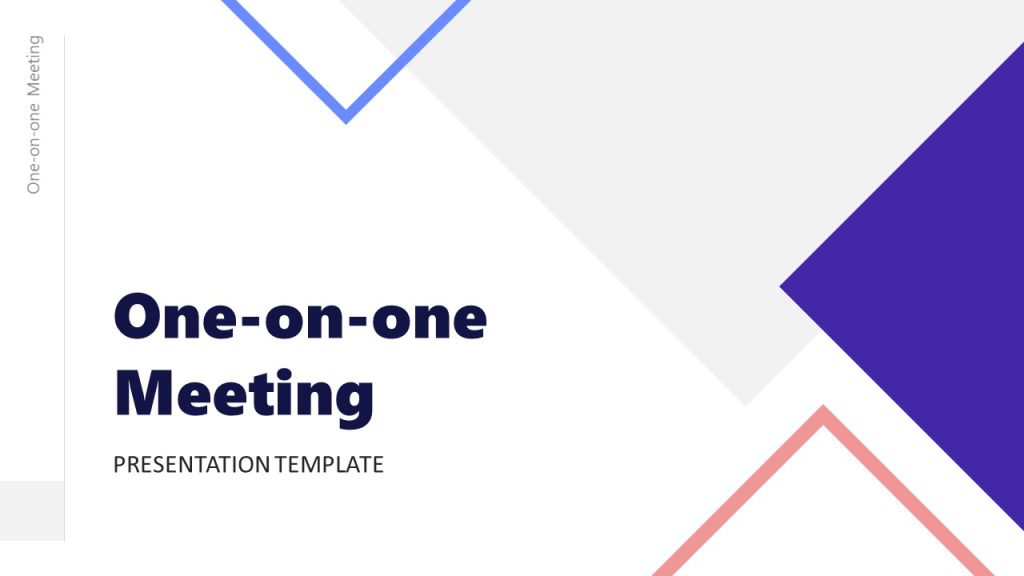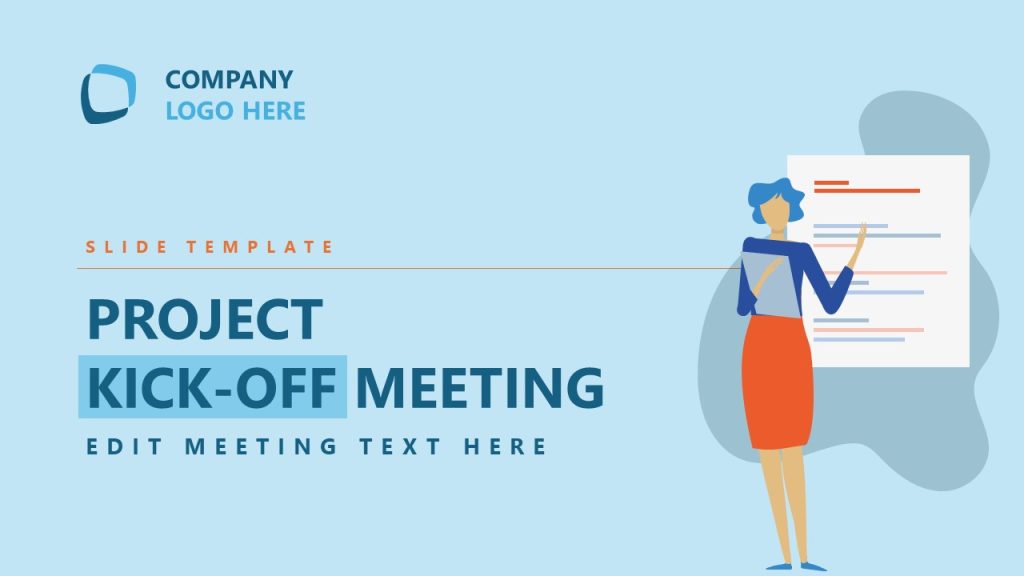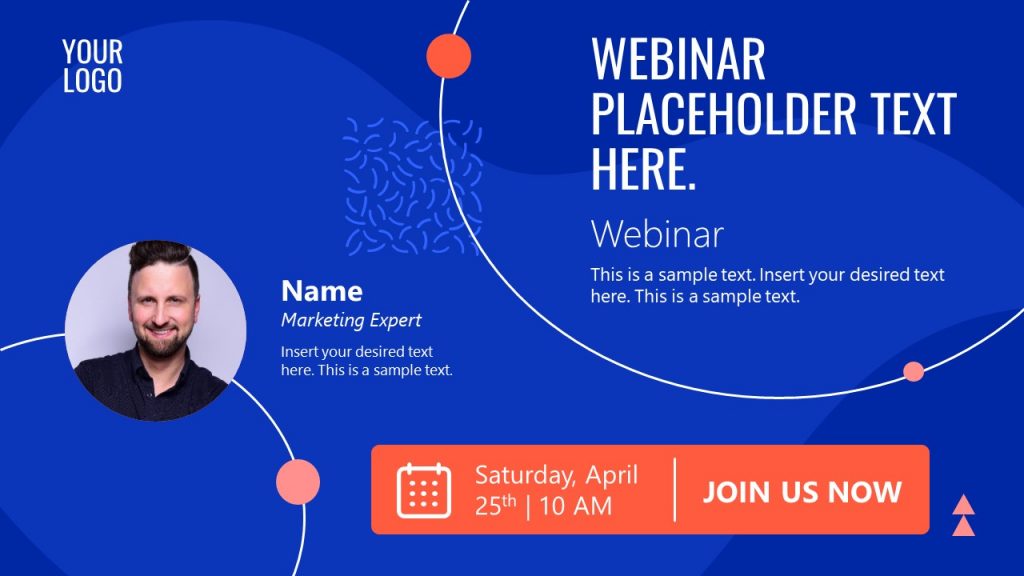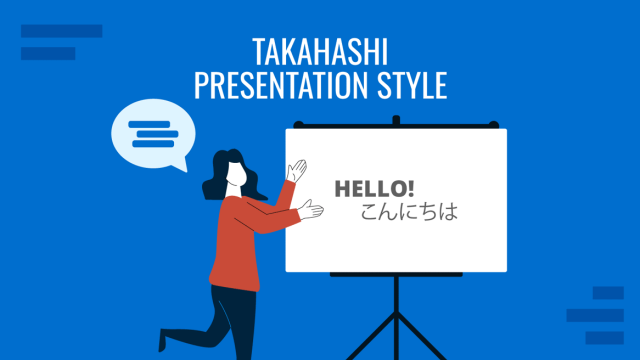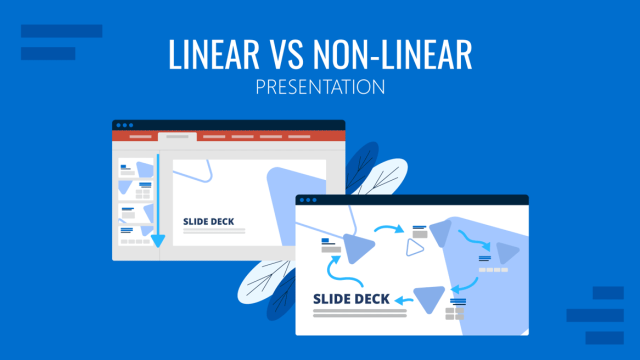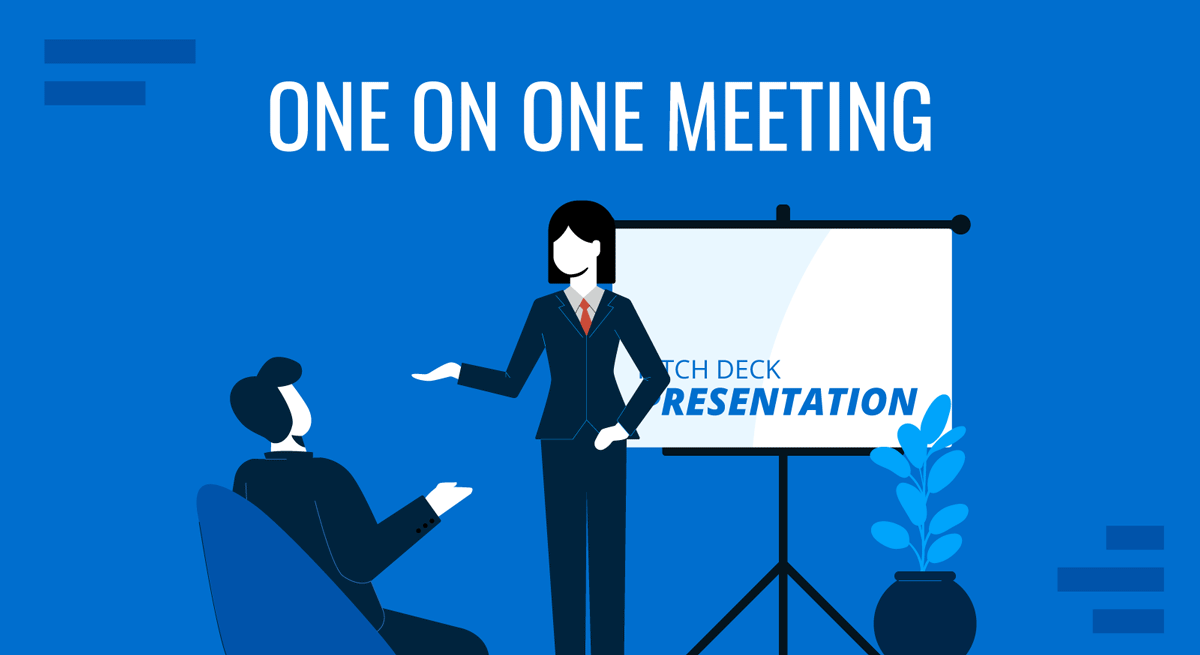
One-on-one meetings offer a unique space for two individuals to connect, collaborate, and grow. Whether it’s a manager checking in with an employee, or a colleague delivering a tailored presentations, these interactions—often called 1-to-1 meetings, check-ins, or 121s—prioritize personal attention over the broad strokes of group discussions.
Nowadays, mastering the art of the one on one presentation is more valuable than ever, blending preparation with adaptability to meet the needs of a single audience member. From career development talks to training sessions, these meetings foster trust and clarity, making them indispensable in professional and personal settings.
In this article, we’ll cover the skills required to excel in these intimate exchanges, with insights to deliver impactful presentations, suggested PPT templates, and how to structure your slides.
Table of Contents
- What is a One-on-One Meeting?
- Presenting when your audience is one person
- Skills required to present One-to-One
- How to structure a One-on-One slide deck
- Examples of One-on-One Presentations
- FAQs
- Recommended One-on-One PPT Templates
- Final Words
What is a One-on-One Meeting?
A one-on-one meeting is a focused interaction between two individuals, typically designed to foster communication, collaboration, or growth. Often referred to as check-ins, 121s, 1:1s, or one-to-ones, these meetings provide a dedicated space for meaningful dialogue. Most commonly, 1-to-1 meetings occur between an employee and their manager to discuss work progress, career development, and personal growth. Unlike group meetings, the one-on-one format allows for a tailored exchange, addressing specific needs or goals.
The beauty of a one-on-one meeting lies in its simplicity and flexibility. Whether it’s a casual catch-up or a structured session guided by a one on one meeting template, the purpose remains the same: to create an open line of communication. For instance, a 1 on 1 meeting template might outline topics like project updates, challenges, and feedback, ensuring both parties stay aligned. These meetings can vary in frequency—weekly, biweekly, or monthly—depending on the context, such as a 1-on-1 meeting with manager template tailored to workplace dynamics.
Presenting when your audience is one person
Presenting to a single person, also known as a one on one presentation, requires a shift from the typical group dynamic. With only one audience member, your approach becomes more conversational and less performative. This intimacy allows for real-time feedback and adjustments, which can be both an advantage and a challenge. A well-prepared presenter might use a one on one meeting agenda to stay on track, ensuring the discussion flows naturally while covering key points.
Unlike addressing a crowd, a one-on-one setting demands a personal connection. For example, during a one-on-one meeting with a manager, you might tailor your delivery to their specific interests or concerns—something a 1-on-1 meeting with manager template can help outline. Eye contact, active listening, and pausing for questions become critical, as the audience’s reactions are immediate and unfiltered. This directness transforms the presentation into a dialogue, where a one-on-one meeting template PPT might serve as a visual aid rather than the focal point.
Skills required to present One-to-One
We can talk a lot about presentation skills that speakers should master, but when it comes to mastering the one on one presentation format, we talk about a unique skill set. First, active listening tops the list—understanding your audience’s verbal and non-verbal cues ensures you’re addressing their needs. For instance, a manager might listen for hints about an employee’s challenges, adjusting the conversation accordingly. Owning this skill transforms a monologue into a two-way street dialogue.
Adaptability is critical. If the discussion veers off-topic, you pivot smoothly, gathering your thoughts before conducting the talk back to your desired area. This is particularly important when we’re faced with the situation of delivering detailed feedback on an employee who might be at risk of losing their job—applying emotional intelligence can help to identify challenges or where the organization failed the employee and how both parties reshape the situation or terminate it altogether.
Clarity and conciseness is also important. You must distill complex concepts into digestible points to avoid potential misunderstandings. Every minute counts, and if you are on the employee’s side, remember your manager probably has several one-on-one instances during that day, so make your time worthwhile.
How to structure a One-on-One slide deck
In order to know how to make a presentation with the one-on-one format, we’re going to walk through slide by slide, with some visual examples.
Slide 1: Title and Welcome
Kick off with a simple title slide. Use a bold, easy-to-read font for something like “Catch-Up with [Name],” paired with the date. Add a subtle background—a soft gradient or a calm image like a desk or coffee cup—to set a relaxed, professional vibe. Depending on the context, you can toss in a friendly line like “Looking forward to our chat!” to break the ice.
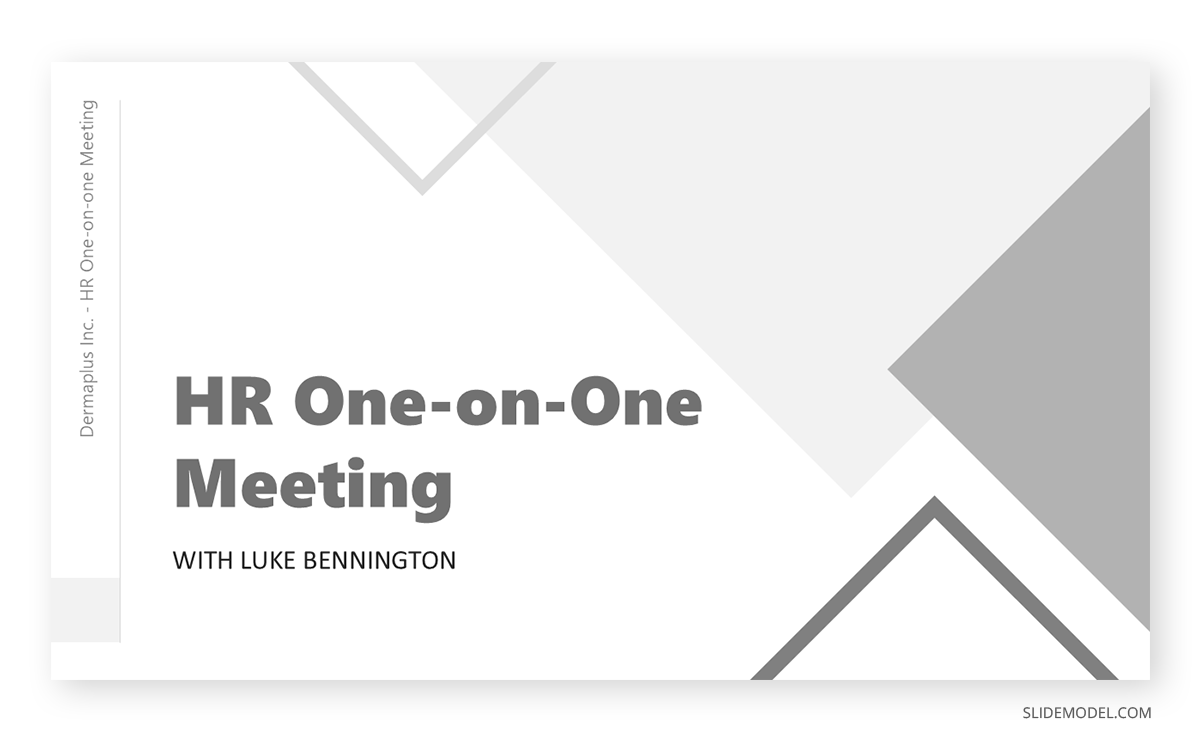
Recommended lecture: How to Start a Presentation
Slide 2: Agenda Overview
Lay out the plan with a quick rundown of what you’ll cover. A short bullet list works—think “Quick updates,” “What’s next,” “Your thoughts”—or try a vertical timeline with clean lines or small icons (like a checkmark or arrow). Keep it light and open, leaving room for flexibility.

Slide 3: Updates and Progress
Share what’s been happening since last time. A small bar chart or progress circle can show something tangible—like a project at 80%—without getting too fancy. Stick to brief phrases: “Wrapped up the report” or “Hit a milestone.” Use a consistent color scheme, maybe blues or greens, to tie it together visually.
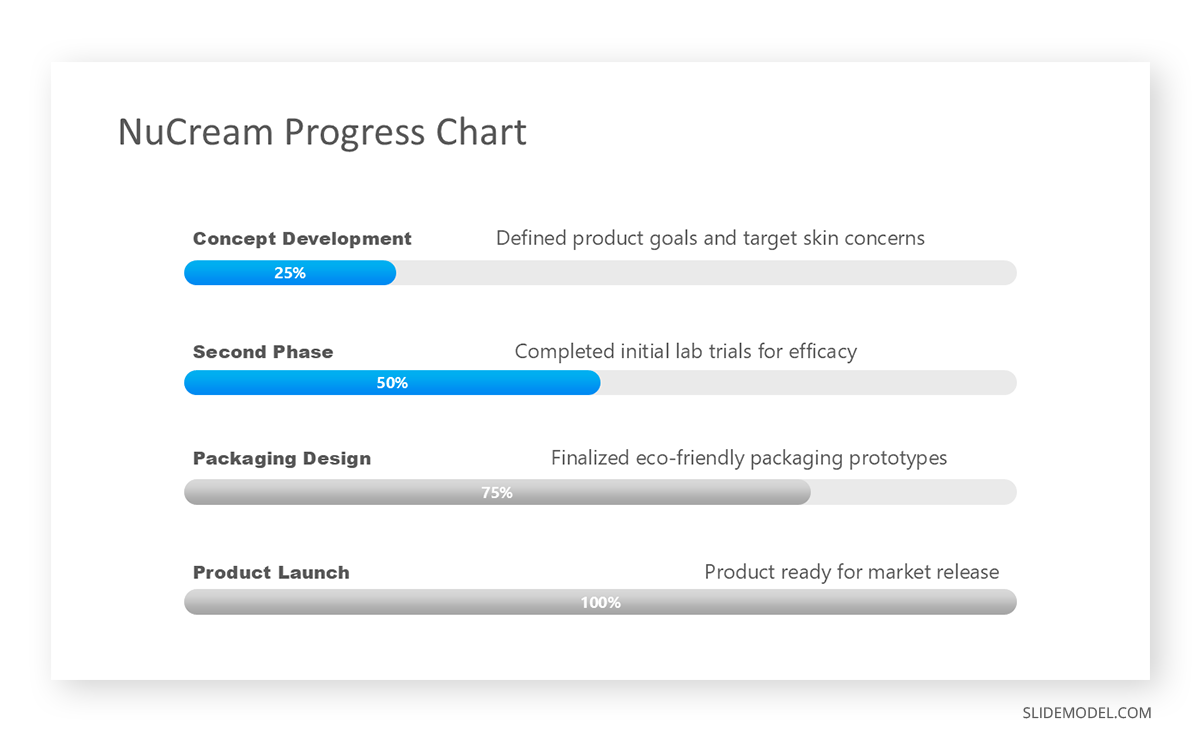
Slide 4: Discussion Points
Dive into the meat of the meeting. Set up a two-column layout: one side for your topics (e.g., “New priorities”), the other blank for their input or notes. Drop in a subtle icon—like a lightbulb or question mark—to keep it visually interesting without overdoing it.
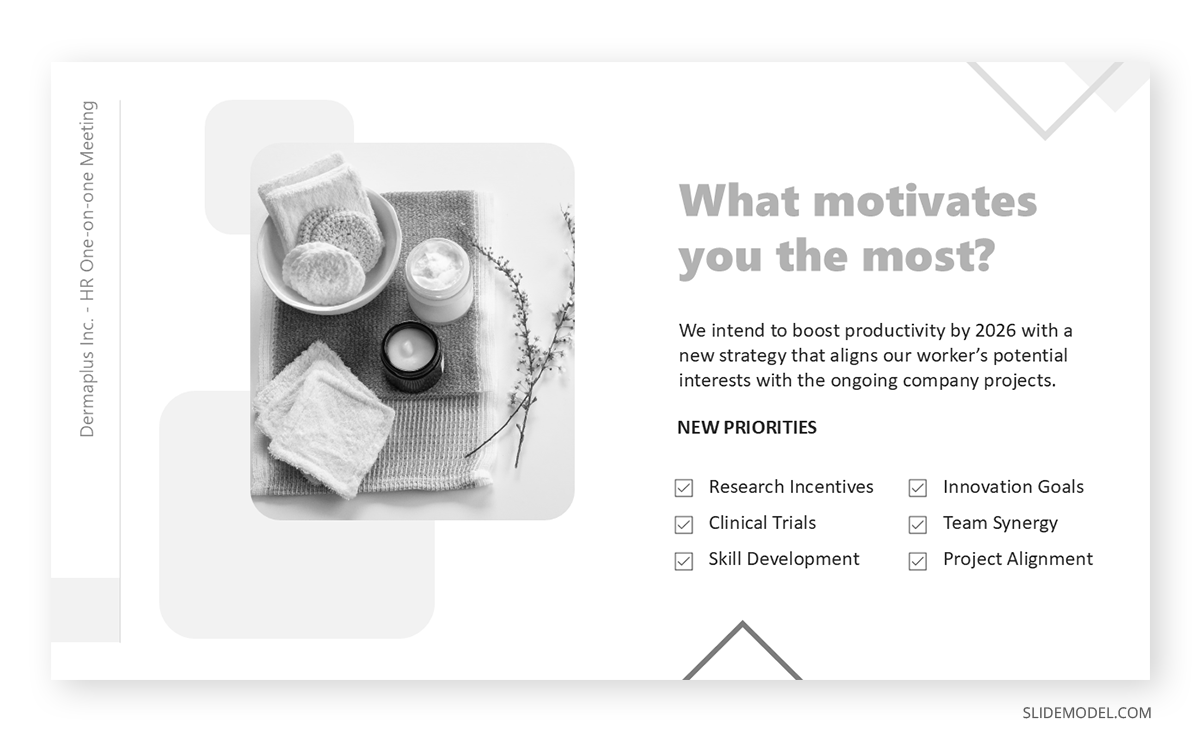
Slide 5: Feedback and Growth
Touch on what’s working and what could improve. A simple table or a star graphic (e.g., 4/5 for effort) can make feedback pop visually. Pair it with concise, positive notes like “You nailed X—let’s tweak Y.” Soft tones like yellow or teal keep the mood constructive.
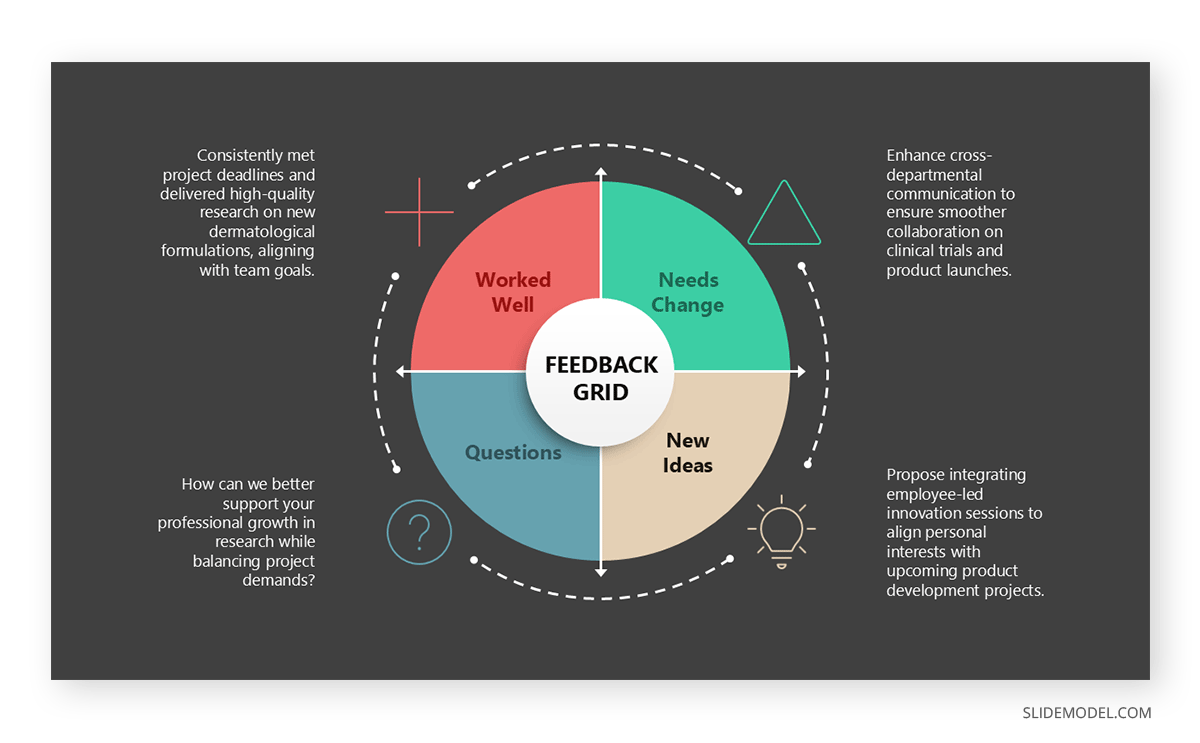
Slide 6: Action Items
Wrap up with clear next steps. A checklist with boxes or bullets works great—list tasks like “Finish draft by Tuesday” and who’s on it. Make deadlines stand out with bold text. Keep the layout straightforward so it’s easy to follow.
Recommended articles:
Examples of One-on-One Presentations
Training Sessions
Imagine a manager sitting down with an employee to walk through a new process—like mastering a software tool. The presenter might use a screen-share or a simple handout, breaking it into bite-sized steps. The employee can ask questions on the spot, try it out, and get instant pointers, making it a hands-on learning experience built just for them. You can learn more about this in our article on training presentations.
Performance Reviews
These are classic one-on-ones. A supervisor meets with a team member to go over how things have been going—highlighting wins, like a project done well, and areas to tweak, like time management. It’s a chance to celebrate progress and set new targets, all in a private, focused conversation.
Career Coaching
Here, the goal is future-focused. A mentor or manager sits with someone to map out their next career steps—maybe discussing a promotion or a new skill to pick up. It’s a back-and-forth, dreaming up a plan that fits their ambitions, with room to adjust as ideas flow.
Sales Pitches
Picture a salesperson meeting a potential client one-on-one. They’d tailor the pitch to that person’s needs—say, showing how a product solves their specific problem. It’s less about flashy slides and more about listening and adapting to seal the deal.
Recommended lecture: Sales Pitch Presentation
Conflict Resolution
When two people need to sort out a disagreement—like a missed deadline causing tension—this format shines. They can lay out their sides, find common ground, and agree on a fix, all without an audience adding pressure. It’s direct and discreet.
FAQs
Why do one-on-one meetings matter?
They build stronger connections and keep everyone aligned. Regular catch-ups give you a chance to hash out priorities, tackle roadblocks, and make sure no one’s left in the dark.
How’s a one-on-one different from a team meeting?
It’s all about the individual. Team meetings cover big-picture stuff, but a one-on-one zooms in on one person’s needs, challenges, or wins.
What if there’s awkward silence during the one-on-one meeting?
Don’t sweat it—give them a moment to think. If it drags, gently nudge the conversation forward with a question or new point.
What’s a typical manager-employee one-on-one like?
It’s a mix of checking in on work, talking about growth, and sorting out any hiccups. It’s casual but purposeful.
How do I wrap up a one-on-one?
Sum up what you covered and agree on what’s next—maybe send a quick note afterward to lock it in.
Why is listening so big in a one-on-one?
It’s how you figure out what they really need. Hearing them out—really hearing them—makes the whole thing worthwhile.
How to effectively run a one on one?
To run an effective 1-on-1 meeting, begin establishing a clear purpose and agenda, then prioritize open communication between the meeting members, and focus on the employee’s needs and goals.
Recommended One-on-One PPT Templates
In this section, we’ll list our selection of One on One meeting PowerPoint templates to speed up your workflow. Remember, these PowerPoint templates are also repurposable as Google Slides templates, and are 100% editable slide layouts.
Final Words
One-on-one meetings are more than just a quick chat—they’re a powerful way to connect, share, and grow. You might be guiding someone through a new task, checking in on their work, or hashing out a tricky issue—whatever the goal, these moments let you zero in on what counts. They’re flexible enough to keep loose or tighten up with a plan, using slides if it helps or just talking face-to-face. Success comes down to showing up prepared and truly engaging with the other person.
This article has laid out the essentials: what these meetings are, how to present to just one listener, the skills that make it click, a way to build a slide deck, and examples from everyday life. It’s not about dazzling anyone—it’s about cutting through the noise to build understanding and trust. Anyone can make these sessions work with a bit of effort and focus. Next time you’re across from someone, take it seriously, listen hard, and let the discussion unfold. That’s how you turn a quick meeting into something that strengthens ties and gets results, step by step.
